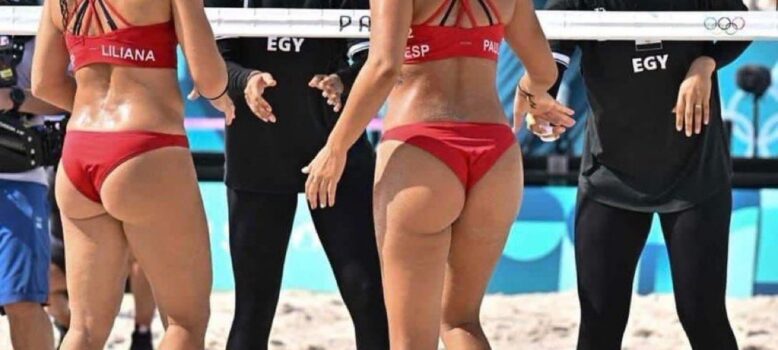
Uniform Controversy: Why Women’s Rights Groups Are Upset Over Beach Volleyball Attire—But Athletes Aren’t
Contributing Writers
Aug 6, 2024

Women’s beach volleyball 🏐 https://t.co/Dry9fKlvHb
— THE GOAT 𝕏 🐐 (@THEGOATED0X) August 2, 2024
USA Women’s Beach Volleyball vs Canada! The Canadian gals, Brandie and Melissa, are wearing some nice wedgies. 👙 #Paris2024 USA vs Canada pic.twitter.com/dSLjPbHkRV
— Roger (@sir_roger1) August 5, 2024
no one supports women’s sports more than me
i am the biggest beach volleyball in the nation.
i will not apologize pic.twitter.com/lxHopWqfO5
— Seltzy 👑 (@SeltzerKing_) August 1, 2024
Women’s rights groups have recently expressed concern over the beach volleyball uniforms worn by female athletes at the Paris Olympics, deeming them “sexist” and potentially objectifying. However, this criticism appears to be at odds with the opinions of many of the athletes themselves.
The controversy stems from the stark difference between men’s and women’s beach volleyball attire. While male players typically wear loose tank tops and shorts, female athletes have traditionally competed in figure-hugging bikinis. This disparity has led some advocacy groups to argue that the women’s uniforms sexualize the athletes and prioritize appearance over athleticism.In 2012, the International League for Women’s Rights held a protest in Paris against what they perceived as gender discrimination in the sport. Annie Sugier, a spokeswoman for the organization, claimed that the uniforms were “using women’s bodies as sex” and described it as “a clear case of sexism”.
However, many female beach volleyball players have a different perspective on their uniforms. Some athletes argue that the bikini-style outfits are practical for their sport. They claim that two-piece uniforms prevent sand from getting trapped in their clothing, which could otherwise restrict their movements during play.Retired player Jennifer Kessy explained that sand in looser clothing can be “restricting” and “limiting” to an athlete’s movements.
This sentiment is echoed by other players who prioritize performance and comfort over modesty concerns.It’s worth noting that the rules regarding beach volleyball uniforms have evolved. Female players now have the option to wear leggings, and some athletes have taken advantage of this change. For instance, Marie-Sara Stochlova from the Czech Republic has competed in leggings, while French players Alexia Richard and Lezana Placette recently wore shorts and t-shirts under their bikini tops.
The debate surrounding beach volleyball uniforms highlights the complex intersection of athleticism, practicality, and societal perceptions of women’s bodies in sports. While women’s rights groups raise valid concerns about potential objectification, it’s crucial to consider the voices and preferences of the athletes themselves, who often prioritize performance and comfort in their uniform choices.
As the conversation continues, it’s clear that there’s no one-size-fits-all solution. The focus should perhaps be on ensuring that female athletes have the freedom to choose uniforms that make them feel both comfortable and empowered to perform at their best.








